The environmental education curriculum RoheTeh (GreenTech) has been developed and supplemented within the framework of two projects. First, the project “RoheTeh – environmental protection through green technology” was an environmental education project in 2022-2024, the aim of which was to introduce students to green technologies and raise environmental awareness. As part of the project, a curriculum was developed that combines the introduction of green technologies and active learning in the form of outdoor learning, where students conduct practical experiments, solve tasks and build models. As part of the project, green technology mobile learning and activity kits have been designed, assembled and used.
The project was supported by the Estonian government through the Emissions Trading System (ETS) funded by the Ministry of Climate Change / Environmental Investment Centre (project Kliima.7.01.22-0136, link to the project at EIC (in Estonian): https://kik.ee/et/projektid/roheteh-keskkonnahoid-labi-rohetehnoloogia-kuidas-saan-mina-osaleda-rohetehnoloogia)
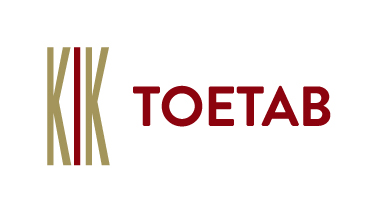
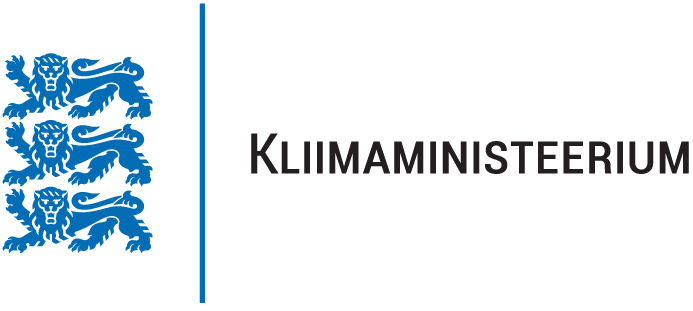
Secondly, the project “RoheTeh GP: Improving green technology knowledge and technology and digital skills in upper secondary and basic schools and in hobby education” was carried out from April to December 2024. Its goal was to develop a mobile set of active learning tools for upper secondary and basic school students to familiarize themselves with green technologies and environmentally sustainable solutions, to stay informed, to support innovation, and to enable comparative analysis and calculation of environmental footprints, and to develop a corresponding elective program for upper secondary school students.
Within the framework of the project, new sets of teaching aids promoting active learning were supplemented and developed for conducting environmental education programs on green technologies and energy for upper secondary and basic school levels on the topics of solar energy, wind energy, water energy, water observations, environmental measurements and carbon footprint calculation. A corresponding upper secondary school elective program was also developed. A new STEAM hobby education school section was launched in the Nõmme-Harku region of Tallinn, Estonia (“Nõmme Koprad” – Nõmme Beavers) and the STEAM hobby shool was expanded in Ida-Harju County.
The project was supported by the Estonian Ministry of Education and Research within the framework of the funding program “For Youth 2024”.

Environmental education curriculum on green technologies and energy
The curriculum examines various topics related to green technologies, which gives students a first overview and the opportunity to explore further independently. In order to better understand the needs and opportunities of green technology, the curriculum focuses primarily and primarily on the topics of situational awareness, measurements and remote sensing in practical activities, and other areas of green technologies are also addressed during the introduction and discussions. The curriculum introduces and addresses the following topics:
TOPIC 1. Air and its quality. Measurement of air parameters. Use of a portable battery bank for field work.
Poor indoor and outdoor air quality reduces lifespan and causes health problems. In the curriculum, we introduce and test outdoor air quality sensors and other devices for measuring indoor and outdoor air parameters and defining their properties.
For outdoor measurements, we use a portable weather station, a display panel for reading the readings, and a portable battery bank to provide light for the display panel. Students record and discuss the following readings: air temperature, air humidity, air pressure, wind direction, wind speed, UV index, and light irradiance (light radiation flux per 1 m2). The dynamics and reasons for changes in readings are also analyzed. The discussion of irradiance (W/m2) creates a direct connection with solar energy applications in topic 2 of the curriculum.
Since the weather station display panel requires 230V AC power to maintain a bright display, we use a portable battery bank outdoors, which allows this. Students will be introduced to all the battery bank options (AC output, USB outputs, charging, battery bank status indicators, etc.).
To measure the indoor climate of the building, we will introduce and use air temperature and humidity and CO2 measurement devices and a cloud solution for data processing. At the beginning of the learning program, we will place portable devices in the classroom, hallway, and other rooms, as well as outside. During the program, the sensors will measure air temperature, humidity, and CO2 content in the air. During the learning program, students can visually monitor in real time whether the CO2 content in the air is within or exceeds the recommended limits. During the analysis phase of the learning program, students will receive information from tablets about the readings measured in all rooms during the entire learning program, compare it with the space usage, and analyze the dynamics.
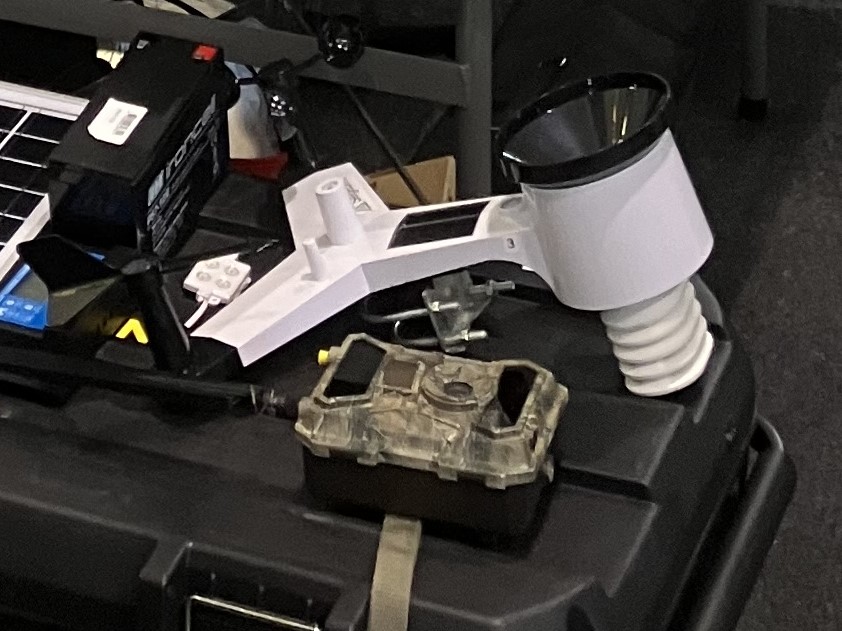
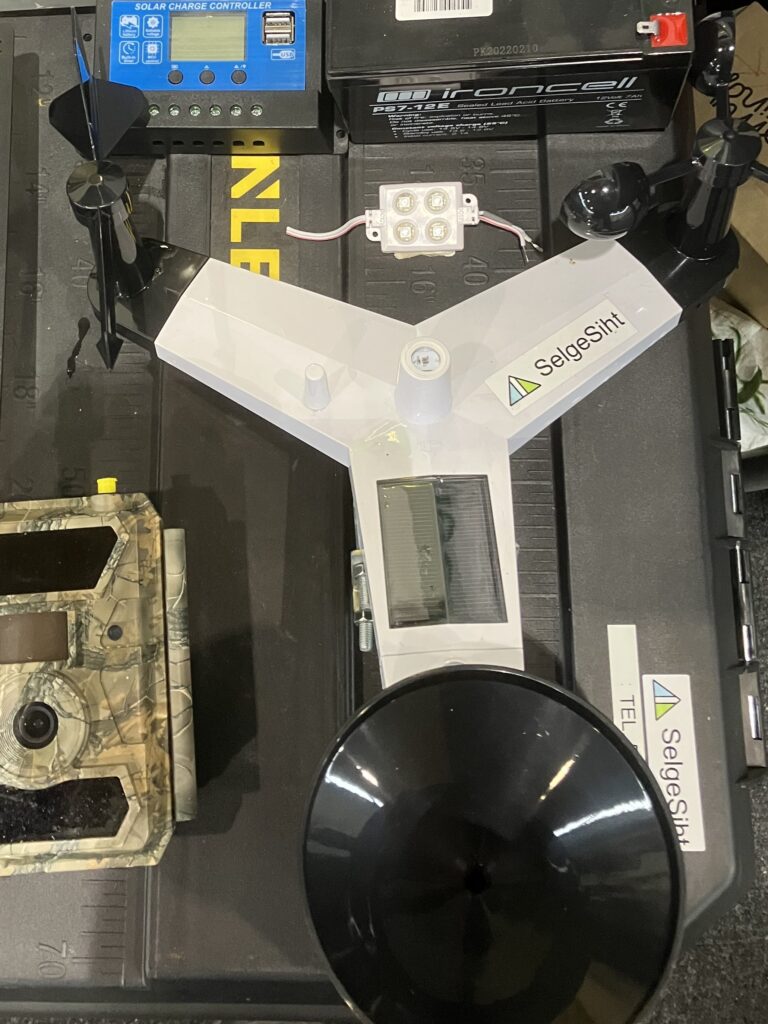
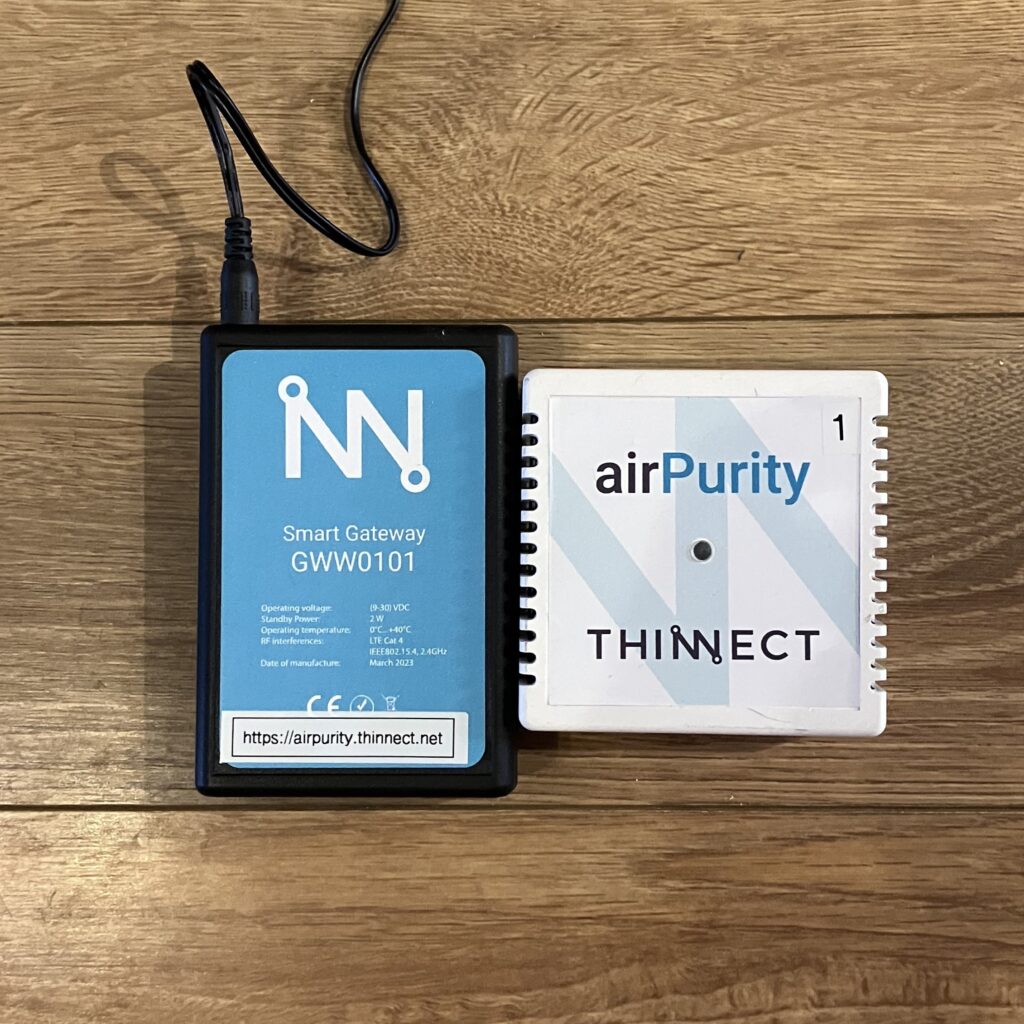
TOPIC 2. Renewable energy. Connecting the solar panel, controller, battery and consumer.
We will discuss how to replace fossil fuels and greenhouse gas-producing energy production technologies with renewable energy. We will learn to collect, store and use solar energy and use a solar panel, controller, battery and LED light for this. We will put together the necessary connection diagram, carry out tests and measurements with the solar panel, storage devices and lights. Students will create a connection diagram in groups of 4-6 people (there are a total of five sets per study group plus one sample set). The diagram can also be created indoors, but if possible, the activity will take place outdoors. As part of the RoheTeh GP project, the study set was supplemented with a baseboard, and different connection options were created based on the age of the students participating in the study program (plug or terminal connections).
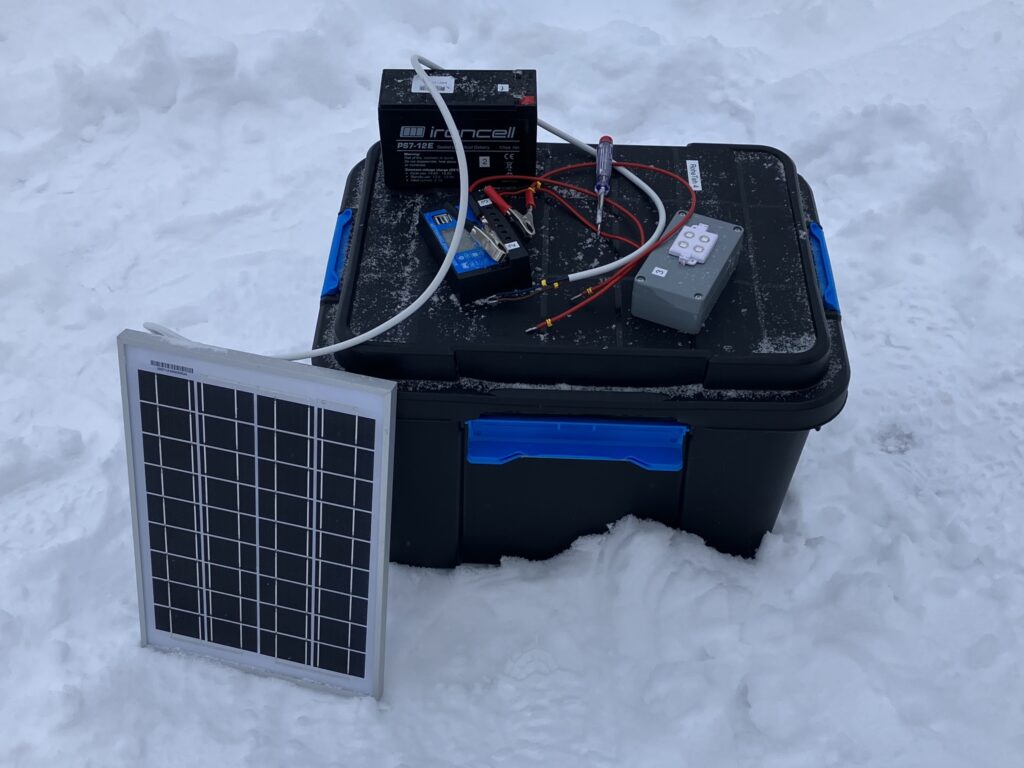
TOPIC 3. Wind energy.
Within the framework of the wind energy topic, students will learn about the basic principles of wind energy, as well as a sample teaching tool. During the learning program, students will prepare the necessary connection diagram in groups of 4-6 and conduct relevant experiments, including measuring the strength of the wind and the corresponding results when putting energy consumers into operation. The teaching tools have been purchased within the framework of the RoheTeh GP project.
TOPIC 4. Water and remote sensing in water area.
Poor-quality water causes environmental pollution and health problems. In the curriculum, we introduce and test water parameter measurements (pH, hardness, additive content), filtration, and observation with an underwater drone (the Chasing Mini S drone was purchased outside the RoheTeh project).
In the curriculum, we compare the properties of water in a natural water body and a public water supply visually and using measuring instruments and test strips. We measure water turbidity, salinity, pH, photosynthetically active light, and other parameters. We use Vernier laboratory equipment (purchased as part of the RoheTeh GP project). Students can control an underwater drone to study a pond, lake, river, or sea and its biota. The drone allows you to photograph and film the findings, and the captured images can later be analyzed to assess the water body and biota. We study the near-shore biota with canopies.
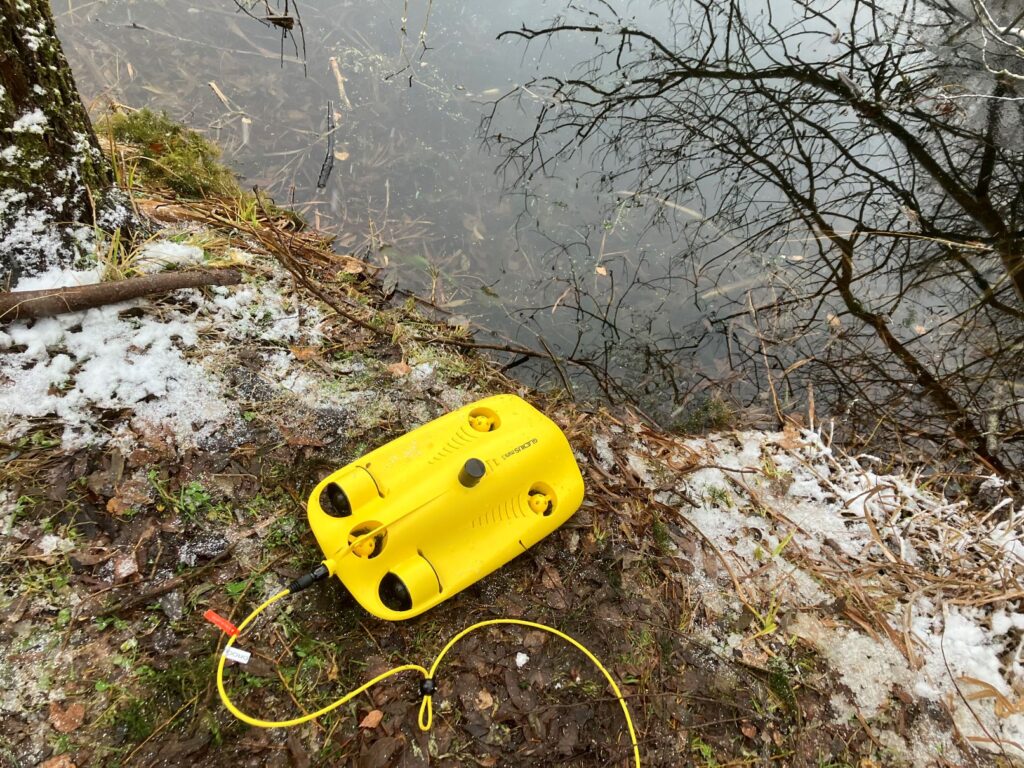
TOPIC 5. Hydropower solutions.
Within the framework of the water energy topic, students will learn the basic principles of using water energy, as well as a sample teaching tool. We will measure the water flow rate and other necessary parameters. During the learning program, students will prepare relevant solutions in groups of 4-6 and conduct relevant experiments. The teaching tools have been purchased within the framework of the RoheTeh GP project.
TOPIC 6. Remote monitoring with a camera. Setting up a wildlife camera, transmitting and viewing photos.
Various monitoring processes require on-site observation in practice, which can have a large environmental footprint, so using remote monitoring can be more environmentally sustainable. In the learning program, we introduce and test practical remote monitoring options with wildlife cameras.
We use wildlife cameras that are triggered by a motion sensor and record an image or, depending on the settings, with video or only video to their memory card and send a reduced-format image and/or video to an email address. The cameras used in the learning program are set to automatically take an image and send it to an email address, which can then be viewed on a tablet. The kit includes: wildlife camera with antenna, the camera has a memory card, a SIM card for transmitting images and batteries. The camera can also be used on battery power or with another external power source. It is also possible to place the camera in a safety cage. The camera is attached to a tree using a fastening strap.
The students’ task in the learning program is to install the camera in a suitable location, test the taking and sending of images, and remove the camera from nature. Five cameras are used in the study group + a demonstration camera. Students work in five teams of 4-6 members, each team has one camera.
Saada tagasisidet
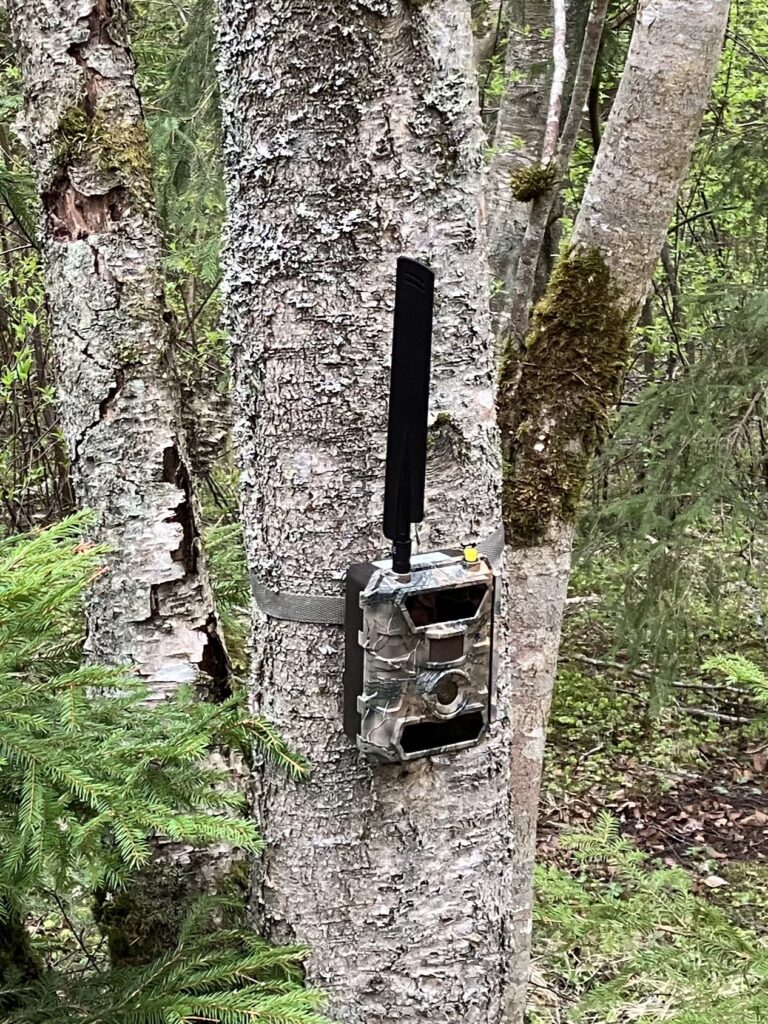
TOPIC 7. Remote sensing. Remote sensing with a drone.
Various monitoring processes require on-site observation in practice, which can have a large environmental footprint, for example, forest fire prevention monitoring, monitoring of possible marine pollution, etc., which is why the use of remote monitoring – drones or satellites – can be more environmentally sustainable. In the study program, we introduce and test practical remote monitoring options and information processing with a small drone (DJI Tello Edu).
Depending on the season, outside temperature and wind speed, this part of the study program is carried out either outdoors or in a building (in a hall or corridor). The students’ task is to pilot the drone to the designated location, capture a photo and bring the drone back so that the next student in the team can start completing the task. Five drones + one sample drone are used per study group, which together allow all students to complete the task.
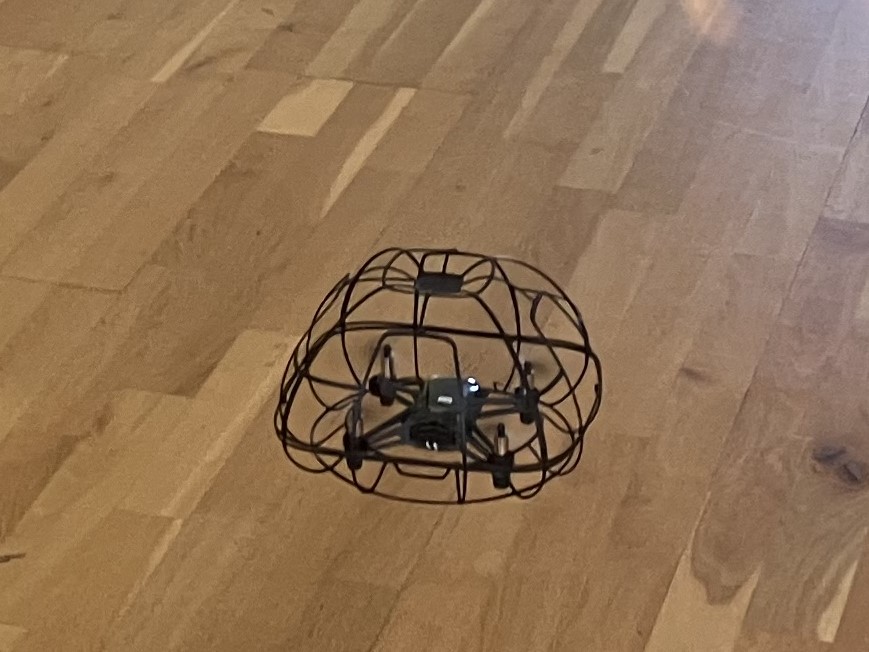
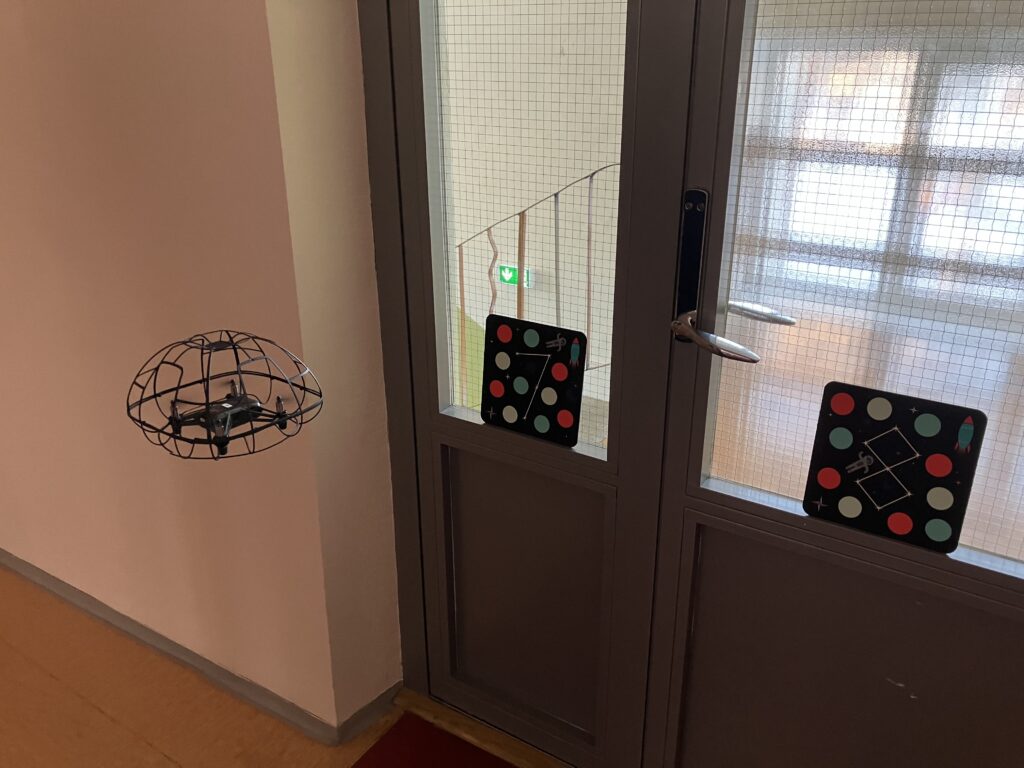
TOPIC 8. Calculating the environmental footprint
The curriculum introduces the concepts of environmental footprint, including carbon footprint and resource footprint, and the principles of calculation. A software application developed within the framework of the RoheTeh GP project (primarily suitable for high school students) is introduced and used to calculate environmental footprint, including carbon footprint, introduce carbon sequestration technologies, and perform comparative analysis of measurement results.
TOPIC 9. Introduction to other fields
The curriculum also addresses and introduces other areas related to various green technologies, including transport, waste recycling, agriculture, forestry and circular economy. Innovative initiatives, new business models and local initiatives are introduced.
TOPIC 10. Discussion and summary.
The curriculum includes a discussion and a concluding section.
Elective subject program for high school.
In addition to developing green technology teaching materials for elementary and high schools and carbon footprint calculation software, a powerful high school elective program to introduce green technologies and carbon sequestration was developed within the RoheTeh GP project.
RoheTeh - environmental protection through green technology: project implementation
The RoheTeh project was carried out in 2022-2024. The project was supported by the Estonian government through the Emissions Trading System (ETS) funded by the Ministry of Climate / Environmental Investment Centre (project Kliima.7.01.22-0136). The project results were:
- Development and furnishing of six mobile green technology learning and activity kits, which will enable students in grades 5-9 to carry out practical activities and experiments in various areas of green technology, situational awareness, and measurement and remote sensing (energy, buildings, air, water, waste, transport, remote sensing) within the framework of the environmental education curriculum, and which will illustrate the background information provided during the curriculum and examples of Estonian solutions. Five learning kits plus a teacher’s kit will allow one class to work in teams of five. The learning programs will be adapted to the school curriculum, and theoretical knowledge and practical experiments will be selected according to the curriculum of the general education school (or other educational institution or hobby school) or the theme of the hobby camp. The SelgeSiht Nature Education Center’s learning program “Environmental Awareness and Green Technologies Learning Classroom” (https://keskkonnaharidus.ee/et/oppeprogrammid/keskkonnateadlikkuse-ja-rohetehnoloogiate-opiou) and Hobby School Selgesiht study program “Nature and green technologies” will be used as a basis.
- Public information materials on green technology mobile learning and activity kits and a sustainable collaboration network to keep such learning tools constantly up to date and share knowledge with all schools. To ensure quality, the project team includes specialists familiar with the field and training, and public information is shared on a website roheteh.ee. (in Estonian) and here in English. As a result, the sustainability of knowledge between representatives of the profession and schools is ensured, and after the end of the project, if there is interest, new copies of the study kits can be assembled and distributed further in schools.
- As a pilot project, a green technologies learning program was implemented as active learning in three regions of Estonia (Viljandi County, Lääne-Viru County and Harju County) for a total of at least 30 classes. In fact, the program was implemented for 64 classes with a total of 800 students.
As part of the follow-up activities, a total of 100 classes, a total of 1,500 students, have received training.
Implementation of the GreenTech GP project
The project “RoheTeh GP: Improving green technology knowledge, technology and digital skills in upper secondary and basic schools and in hobby education” was carried out in 2024. The project was supported by the Ministry of Education and Research within the framework of the funding program “Youth for Good 2024”. Within the framework of the project, new sets of teaching aids that promote active learning were supplemented and developed for conducting environmental education programs on green technologies and energy for upper secondary and basic schools on the topics of solar energy, wind energy, water energy, water observations, environmental measurements and carbon footprint calculation. A corresponding upper secondary elective program was also developed. A new LTT hobby education circle was launched in the Nõmme-Harku region (“Nõmme Koprad”) and the LTT hobby circle was expanded in Ida-Harju County. In more details:
- Adding new functionality to existing green technology and remote sensing mobile learning and activity cases for use with wind energy and its use demonstration and testing learning sets at both the upper secondary and primary school levels.
- Increasing the user comfort and safety of existing green technology and remote sensing mobile learning and activity cases for solar energy sets: replacing the terminal connections of the sets’ controllers with plug-in connections and assembling an additional control box for use at both the upper secondary and primary school levels.
- Adding new functionality to existing green technology and remote sensing mobile learning and activity cases for use with water observation tools and water energy use demonstration and testing learning sets at both the upper secondary and primary school levels.
- Considering existing models and solutions, develop a software application suitable for use at the upper secondary school level for calculating the environmental footprint, including the carbon footprint, educational materials for illustrating carbon sequestration technologies at the upper secondary school level (afforestation, biochar, BECCS, etc. based on the process descriptions and other information from the European Horizon funded research project C-SINK, https://cesere.eu/c-sink-project/) and for comparative analysis of measurement results based on the test kits in mobile learning and activity cases (e.g. which renewable energy solutions to prefer in specific situations or conditions). The basis for the software application will be, among other things, the existing environmental footprint calculation models (https://selgesiht.ee/keskkonnajjalajalje-arvutusmudel/, https://kliimaministeerium.ee/organisatieviteide-khg-jalajalg, https://www.ghg.ee/, https://ekja.ee/et/rohelinemuuseum/materjalid/ jt).
- Developing an elective curriculum for upper secondary school students to introduce green technologies and carbon sequestration, using mobile learning and activity kits supplemented within the project.
- Expanding the offer of hobby education based on the SelgeSiht nature and green technologies curriculum in additional municipalities in Harju County, using mobile learning and activity kits supplemented within the project and linking environmental education activities with home-based nature education for better acquisition, including introducing green technology companies and environmentally friendly solutions in the region.
View and, if desired, download RoheTeh learning materials for a more in-depth review of topics and additional activities as e-learning (in Estonian):
- RoheTeh õppematerjal
- Tööleht KKT ja rohetehnoloogiate õpiõu RoheTeh
- Tööleht 1 lineaarmajandus RoheTeh
- Tööleht 2 ringmajandus RoheTeh
- Rohetehnoloogia integreerimine koolides
- RoheTeh õppeprogrammi ja -vahendite juhend
Additional information: e-mail cesere@cesere.eu or phone +372 5918 8000 or +31 85 345 8000 .